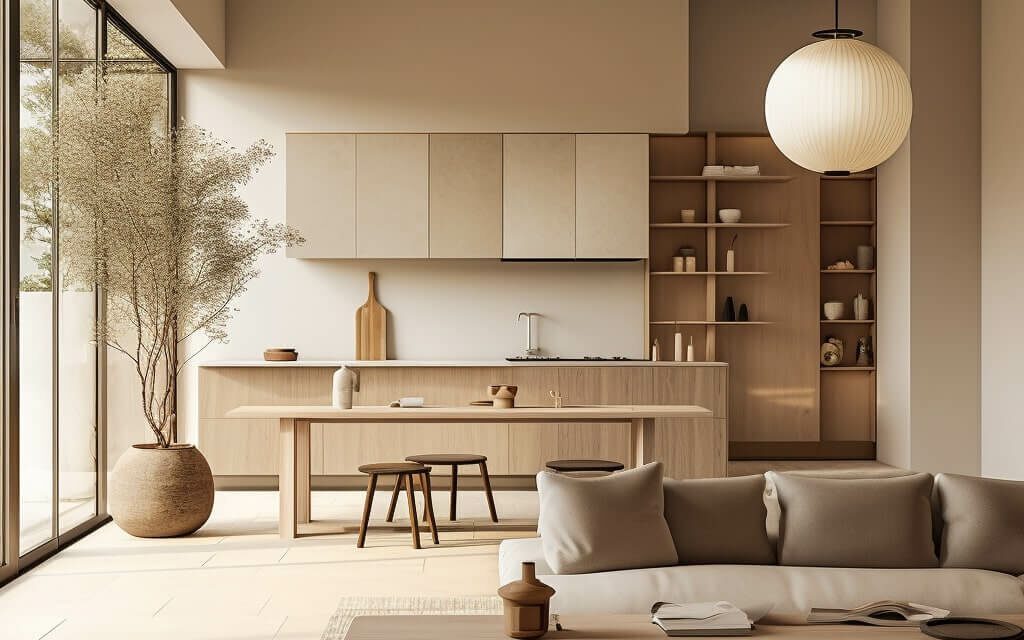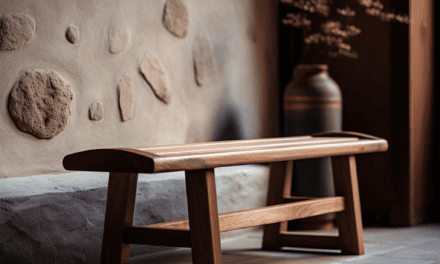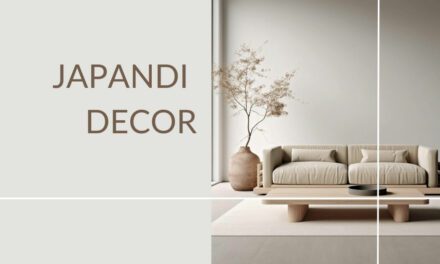Being a lover of all things vintage, I started to explore a different side of Japandi recently. A side that was reminiscent of times past yet seamlessly integrated into the modern world – Retro Japandi.
Retro Japandi isn’t about mimicking an era but incorporating elements that have stood the test of time, whether it be a mid-century chair, an antique Japanese screen, or a retro light fixture.
These pieces, infused with stories and nostalgia, give the space a unique character.
The blend of simplicity and retro charm gives Japandi a whole new dimension, one that encourages you to find beauty in both minimalism and vintage appeal.
And just like that, my journey into Retro Japandi began.
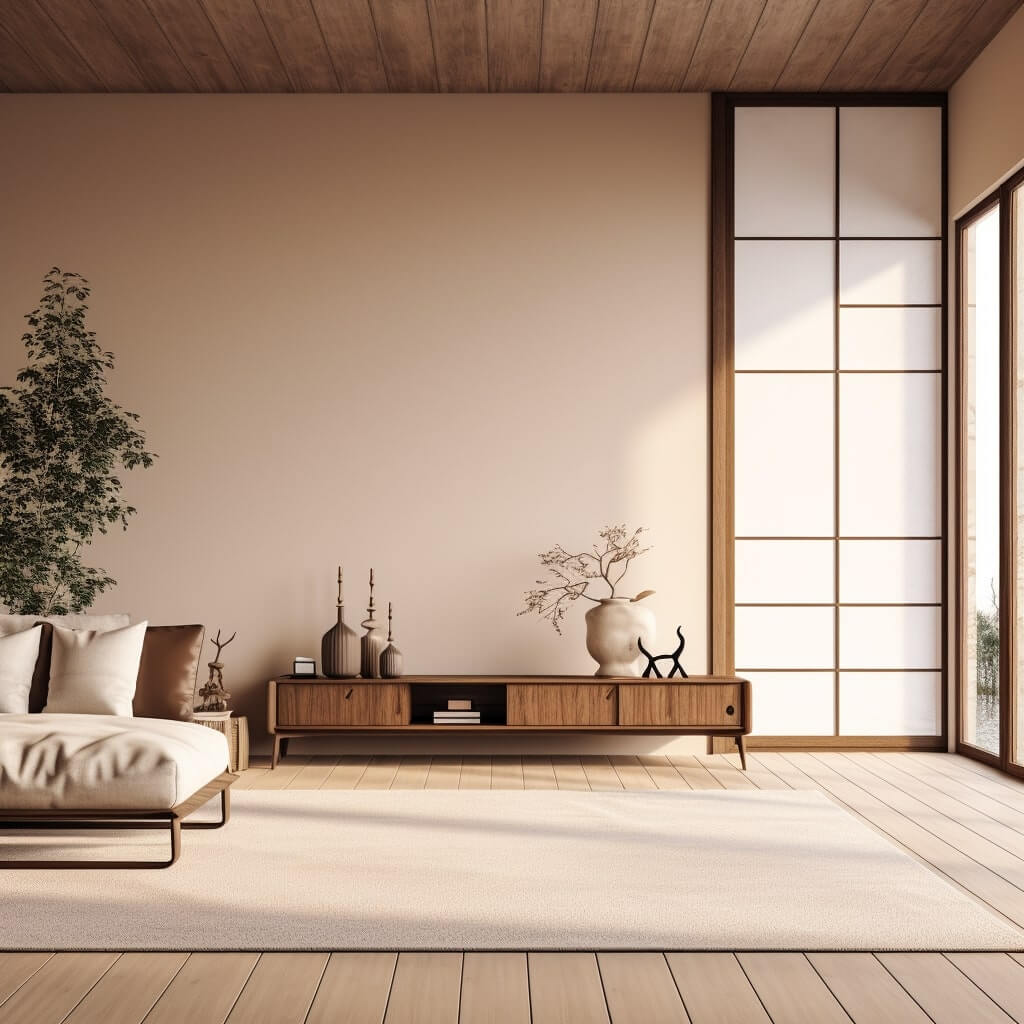
| Section | Key Points |
| Retro Japandi Style | Fusion of Japanese and Scandinavian design with a retro touch |
| Key Features | Minimalism, functionality, muted color palettes, vintage charm |
| Color Schemes | Natural, muted tones with pops of retro hues |
| Furniture | Clean-lined, functional pieces made of natural materials, vintage finds |
| Materials | Use of natural materials like wood, stone, and cotton, contrasted with retro materials |
| Lighting | Emphasis on natural light, use of vintage and mid-century modern lighting fixtures |
| Sourcing Pieces | Tips for finding authentic Japandi pieces and spotting quality vintage items |
| Room Design | Guide to incorporating Retro Japandi aesthetics in different rooms, including combo rooms |
Key Features of Retro Japandi Design
As I delved into the world of Retro Japandi, I discovered that its charm lies in a carefully curated blend of elements.
Each piece, each design choice, becomes a part of a harmonious, almost symphonic experience.
At the heart of Retro Japandi, simplicity and functionality reign supreme. It’s like a silent pledge to the principles of both Japanese minimalism and Scandinavian practicality.
The aesthetic reveres nature, with the use of natural materials like wood, stone, and plants.
Even the color palette is subtly dictated by the earthy tones found in nature, punctuated by vibrant splashes of retro colors.
But the soul of Retro Japandi, what truly distinguishes it, is the incorporation of vintage elements.
Retro Japandi does not shy away from adding personality with mid-century furniture or decor.
These items, often boasting interesting textures and forms, introduce a certain depth and character into the space.
As I started decorating my home with this newfound style, every design choice felt like a conscious act of balance—between old and new, minimalism and maximalism, East and West.
But the real beauty of Retro Japandi, I realized, is that there are no rigid rules, only guiding principles.
It’s a design journey that allows, even encourages, a personal touch, giving your space a unique narrative that speaks to who you are.
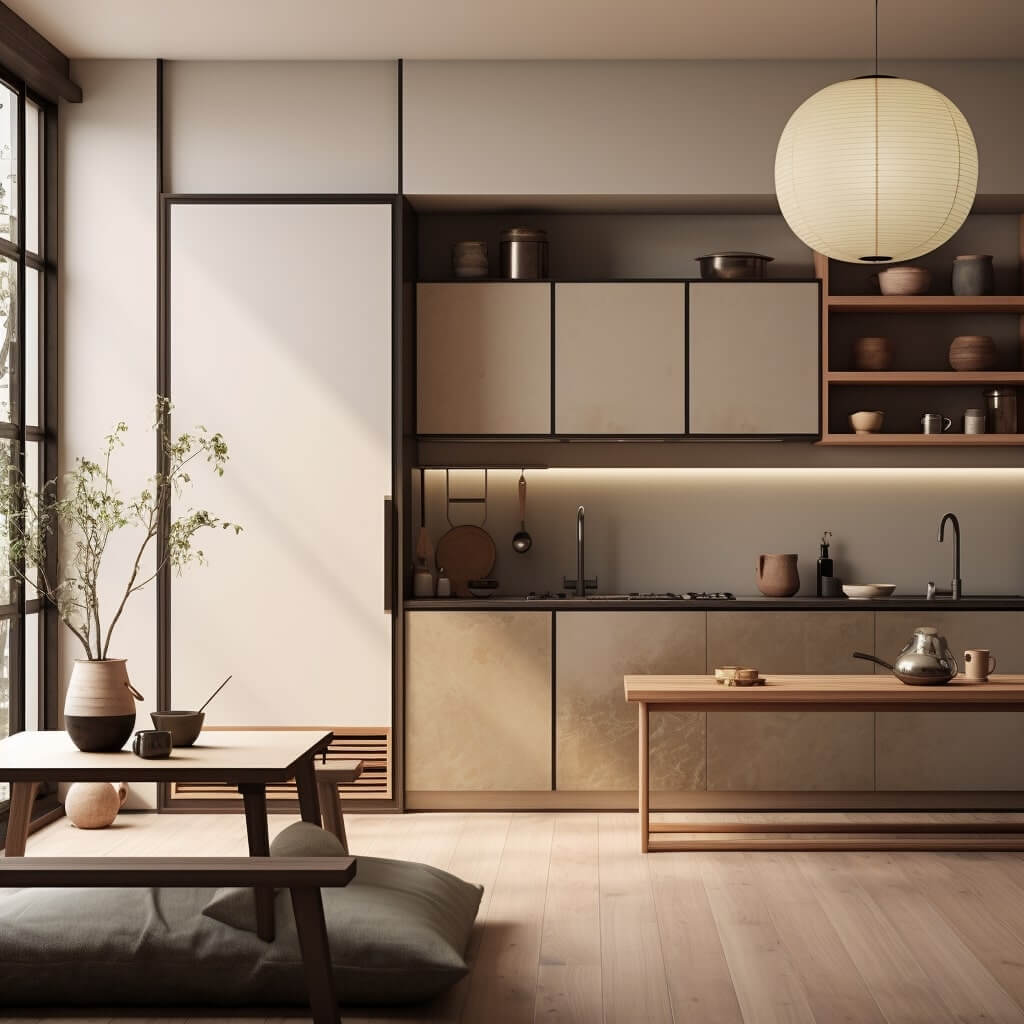
Color Schemes in Retro Japandi Style
When I began my Retro Japandi journey, I quickly realized that colors weren’t just an aspect of design; they became my allies, shaping the mood and atmosphere of each room.
The palette of Retro Japandi is a harmonious mix of natural, muted tones, reminiscent of both Japanese and Scandinavian landscapes.
These subdued colors—creams, soft grays, gentle browns—echo the serenity of nature, subtly grounding the space and lending it a sense of calm.
But it was in artfully blending in the retro hues that my spaces truly began to sing the Retro Japandi tune.
Pops of mustard yellow, teal, or burnt orange hark back to an era gone by, adding warmth and character.
I learned to be judicious in the use of these colors—a retro-print throw here, a vintage lampshade there—ensuring they brought nostalgia without overpowering the room’s tranquil vibe.
My favorite spot in my living room is an antique chest in a worn-out teal, sitting against a backdrop of soft gray walls.
It not only houses my collection of old records but serves as a stunning focal point that perfectly embodies the Retro Japandi ethos: calm, functional, yet brimming with stories.
Color, I discovered, wasn’t just a visual element in Retro Japandi; it was an emotional one, too, stirring memories and evoking a vintage charm that made my home feel both stylish and intimately personal.
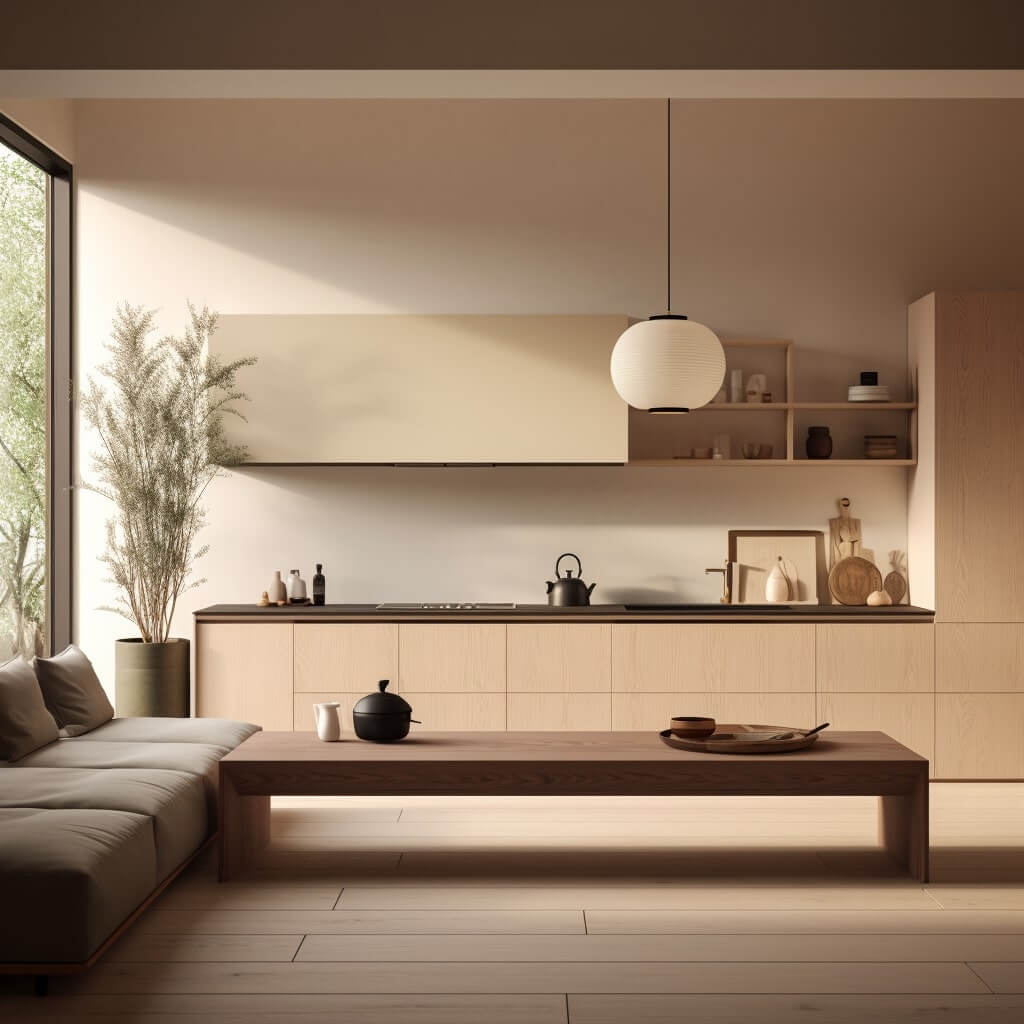
Choosing Retro Japandi Furniture
In my Retro Japandi journey, I discovered that choosing furniture was an exercise in restraint and intentionality.
Every piece had to be purposeful, carrying both form and function in its DNA, while also whispering tales of the past.
The ideal types of furniture for Retro Japandi are those with a touch of minimalism but imbued with character:
- Low seating arrangements that resonate with both Japanese and Scandinavian design aesthetics
- Solid wood tables and cabinets in natural finishes
- Items that showcase craftsmanship, like handwoven baskets or stools
- Furniture with clean lines and neutral tones
But it was the infusion of retro charm that made my spaces truly stand out. Here are some tips on selecting vintage pieces:
- Look for mid-century modern items. Their simple forms and rich Japandi textures can add depth to your space
- A vintage floor lamp or an old wall clock can bring in a sense of nostalgia without overwhelming the room
- Don’t shy away from pieces that show their age. The worn-out patina on a side table or the faded print on an armchair can add a unique charm
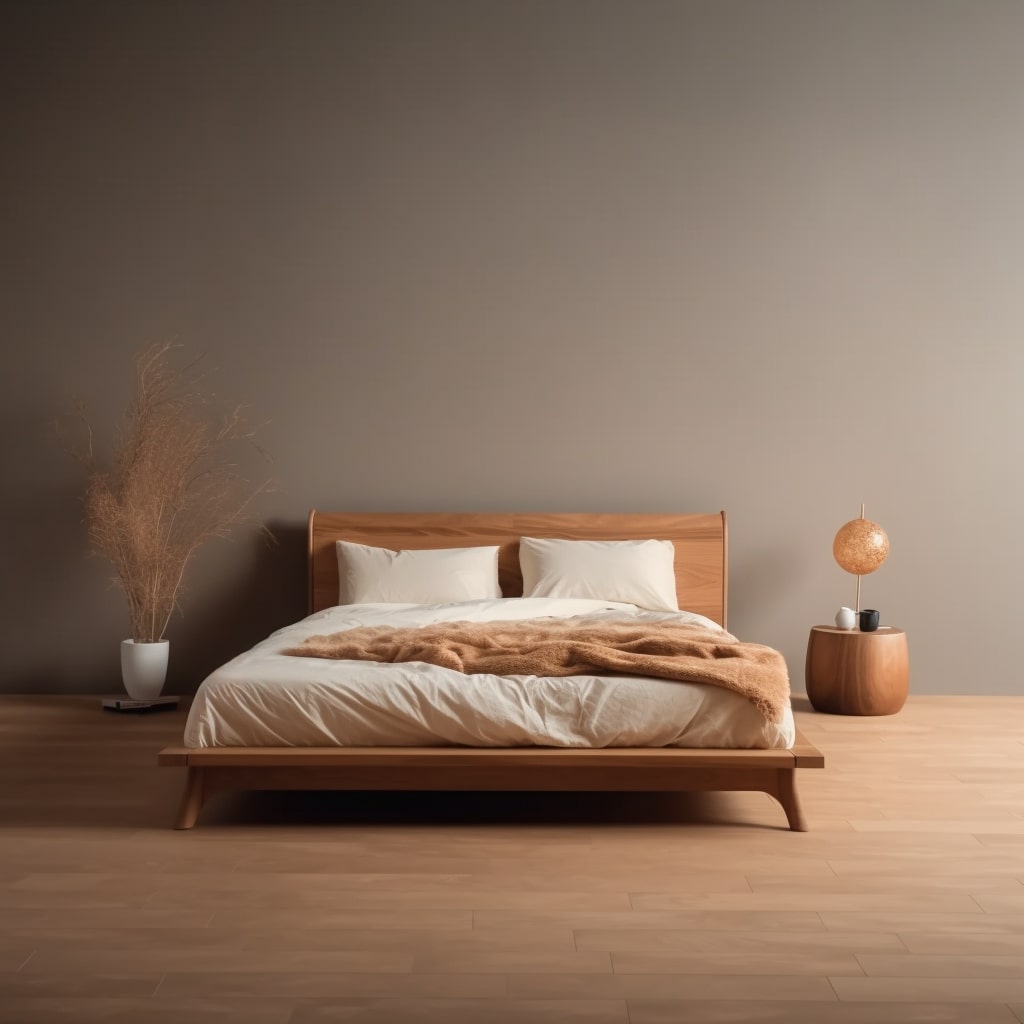
Remember, the goal is not to create a time capsule, but to blend eras seamlessly.
A vintage Danish teak console would look right at home next to a minimalist design Japanese-inspired couch.
Choosing Retro Japandi furniture, for me, was like curating a personal collection where each piece held its own while contributing to a larger, harmonious picture.
It made my home not just a space to live in, but a canvas that beautifully narrated my unique design journey.
Importance of Materials in Retro Japandi Design
The story of my Retro Japandi haven would be incomplete without acknowledging the silent heroes: the materials.
Natural materials like wood, stone, bamboo, and cotton form the backbone of this design philosophy, each adding its unique texture and whispering tales of the earth.
In my home, you’ll find wooden furniture, stone countertops, bamboo blinds, and cotton rugs—echoing the simplicity and respect for nature inherent in Japandi design.
Yet, each material is carefully chosen, not just for its form and function but for the tactile experience it offers.
But what breathes life into these spaces is the juxtaposition of these natural elements with retro materials.
The smoothness of polished wood against a mid-century metal lamp, the softness of a cotton throw cushion against a vintage leather armchair—it’s these contrasts that create a dynamic, visually stimulating space.
In the Retro Japandi ethos, materials play more than a functional role.
They set the stage for a dance between the earthy and the nostalgic, creating a symphony of textures that feels both serene and inviting.
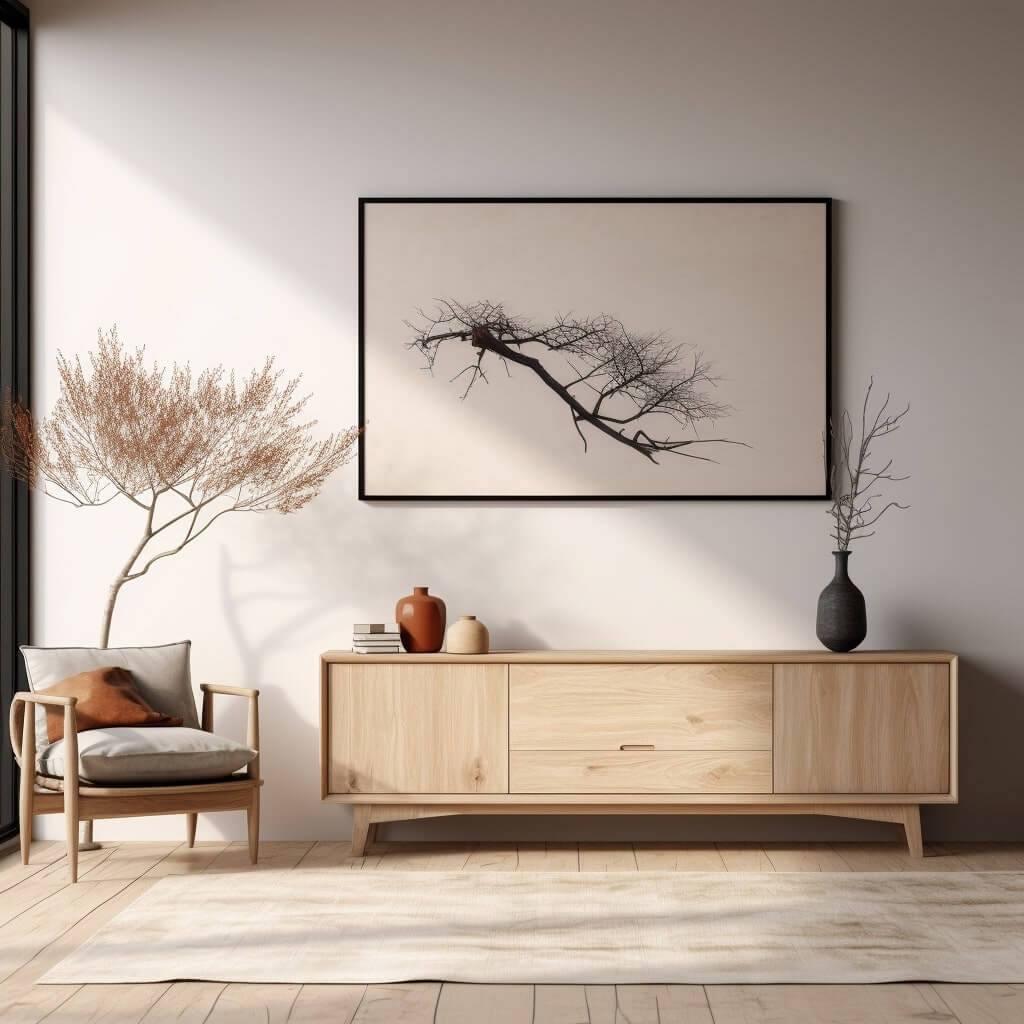
Retro Japandi Lighting Solutions
In Retro Japandi design, lighting serves as the conductor, orchestrating the mood and transforming spaces.
Natural light is celebrated, creating a sense of openness and tranquility.
But it’s in the careful selection of artificial lighting where the retro charm truly comes alive. Here are some ideas:
- Opt for mid-century pendant lights or floor lamps that offer both function and style
- Look for fixtures in brass or muted metallics to create warm, ambient lighting
- A vintage table lamp can serve as a striking focal point, enhancing the overall design story.
In essence, Retro Japandi lighting solutions are about creating harmony, subtly illuminating the blend of minimalism and vintage charm that defines this unique style.
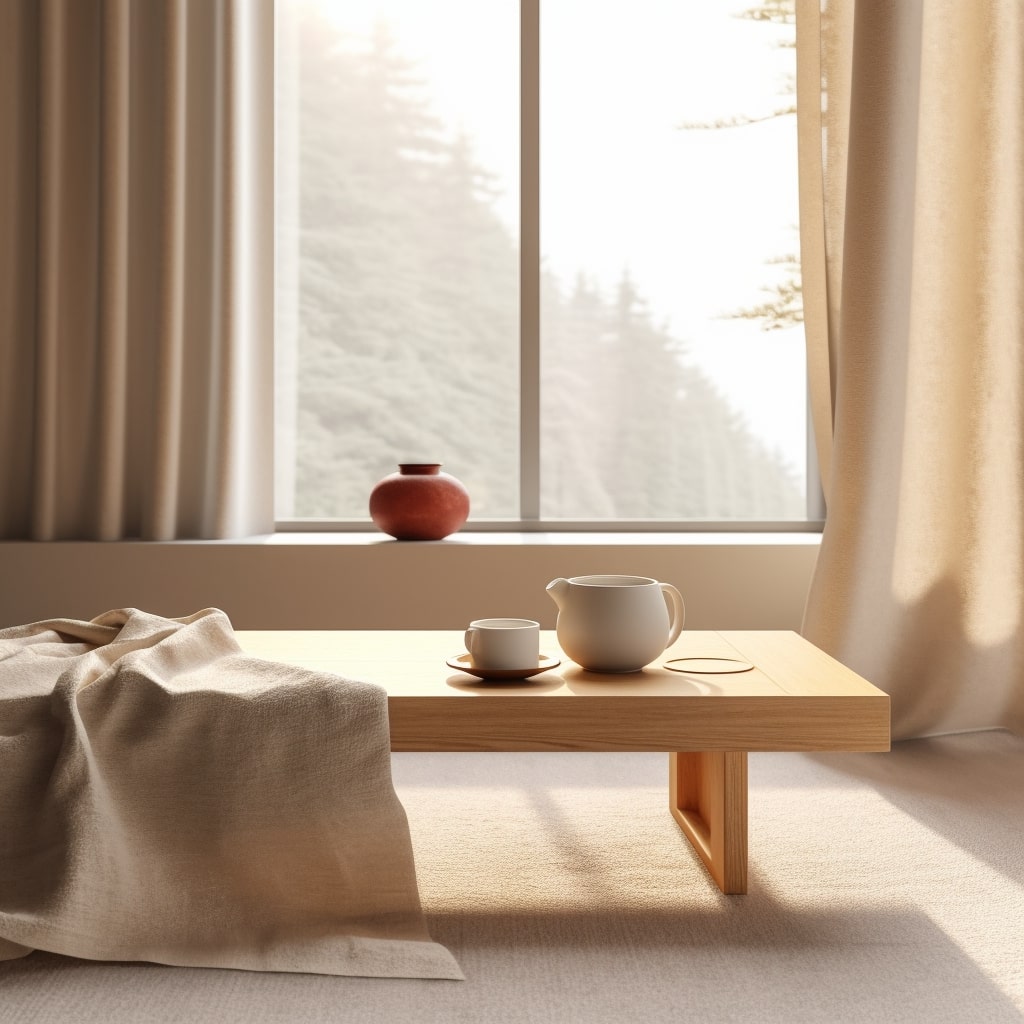
Where to Find Retro Japandi Furniture and Decorations
Embarking on my Retro Japandi journey was akin to becoming a treasure hunter, each find adding to my home’s unique narrative.
But knowing where to look and how to identify authentic pieces was crucial.
Here are some tips that helped me along the way:
- Furniture stores that specialize in Scandinavian or Japanese design are a great place to start. They often have pieces that encapsulate the simple and functional aspects of Japandi.
- Local flea markets and garage sales can be gold mines for vintage finds. Aged trinkets and furniture items with a retro charm can often be found at reasonable prices.
- Online marketplaces like Etsy, eBay, or specialized vintage furniture websites have a wide variety of items.
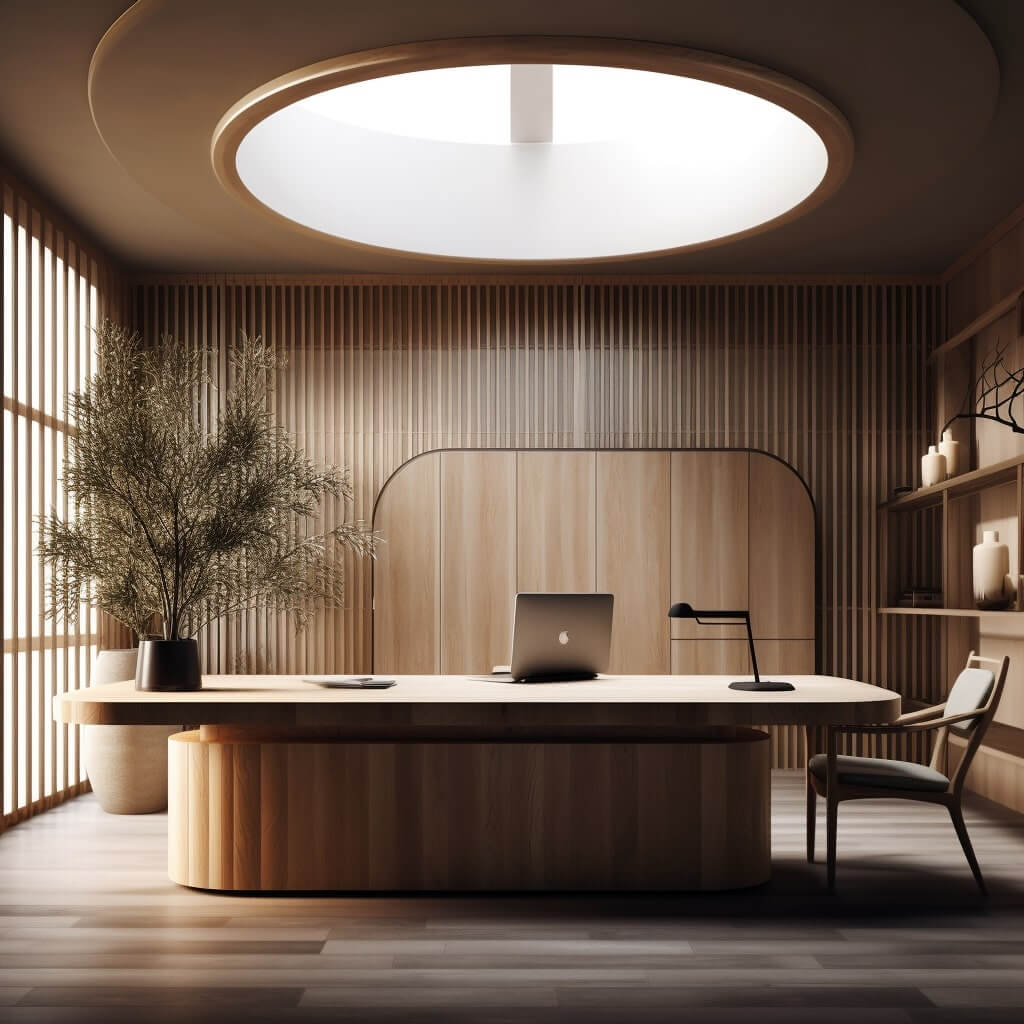
With a keen eye, you can find some incredible pieces.
Don’t forget about local auction houses. They can be a fantastic source for vintage pieces with a rich history.
Reach out to family and friends. Often, you’ll find that they have pieces tucked away in attics or basements that can be repurposed or restored.
But finding these pieces is only half the journey. The real skill lies in identifying quality items.
Here are some insights:
- Look for solid construction. Retro Japandi favors quality and longevity over disposability, so the furniture should be sturdy and well made.
- Check for materials. Natural materials like wood, stone, and metal are always a good sign. They not only look and feel great but also stand the test of time.
- Inspect the piece. For vintage items, a bit of wear and tear can add character. But too much damage can compromise the item’s functionality.
- Research the piece. If it’s a vintage item, knowing its history can add value. Look for manufacturer’s marks and research them.
Sourcing Retro Japandi furniture and decorations was an adventure in itself.
It taught me to be patient, observant, and appreciative of the stories each piece carried.
And as I saw my home transform, every effort felt rewarding, creating a space that was not just aesthetically pleasing but brimming with personality and warmth.
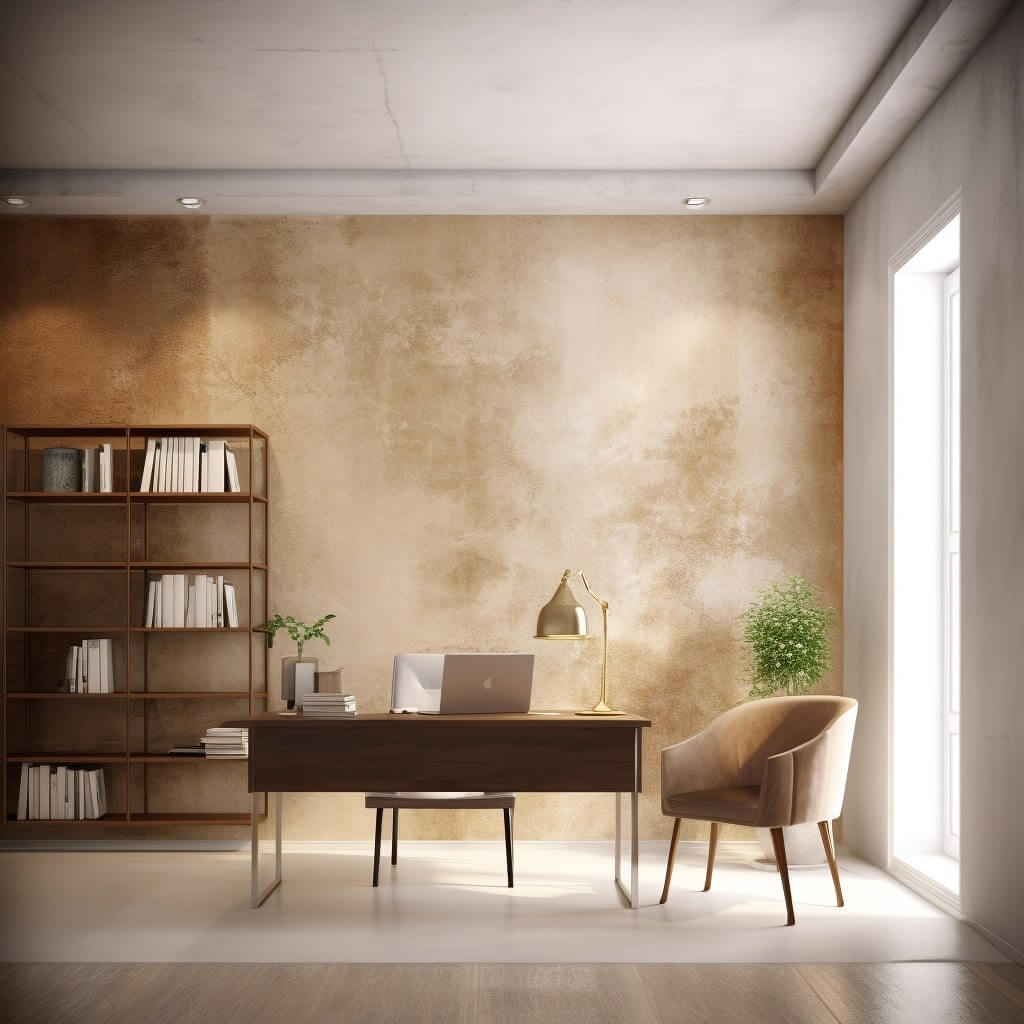
Designing Each Room with Retro Japandi Aesthetics
Here’s how I approached some key spaces:
- Living Room: I chose low seating, like a simple wooden sofa, with mid-century chairs. Retro accents came in the form of a vintage sideboard and a geometric rug in a muted retro hue. Plants dotted the room, their greenery adding a touch of vitality.
- Kitchen: Wooden countertops and simple, clean-lined cabinets gave it a minimalistic feel. A vintage clock and metal bar stools added the retro vibe. I ensured plenty of natural light, and for evenings, I added warm, ambient lighting.
- Bedroom: This space was about serenity. I opted for a minimalist bed frame, a vintage wooden dresser, and soft, earthy colors. A mid-century modern floor lamp provided soft illumination, enhancing the room’s calm ambiance.
Combo rooms, however, demanded a more creative approach. I had a study/guest room to design. Here’s how I tackled it:
- I kept the furniture minimal: a sleek desk, a comfortable sofa cum bed, and plenty of storage solutions like shelves and baskets.
- A retro touch came with a mid-century chair and a vintage rug. A wall-mounted lamp served a dual purpose, perfect for both reading and creating a welcoming environment for guests.
- To clearly define the two areas, I used a large plant, which also brought a sense of freshness to the room.
FAQs
What is the meaning of Japandi?
Japandi is a blend of Japanese and Scandinavian design principles, focusing on minimalism, functionality, and a strong connection to nature, creating spaces that are calm, balanced, and well-thought-out.
What is the difference between wabi-sabi and Japandi?
While both celebrate simplicity and natural elements, wabi-sabi embraces imperfection and the passage of time. Japandi, on the other hand, incorporates Scandinavian elements, favoring clean lines, minimalism, and a blend of modern and traditional aesthetics.
What are the features of Japandi?
Japandi features include minimalism, functionality, muted color palettes, use of natural materials, and a blend of traditional Japanese elements with modern Scandinavian design.
What is the difference between Japandi and Scandinavian design?
While both styles prioritize simplicity and functionality, Japandi brings in a deeper reverence for nature and a more muted color palette, blending these with the warmth and comfort found in Scandinavian design.
What is retro in interior design?
In interior design, ‘retro’ refers to the styles from the recent past, especially the mid-century modern era (1950s-1970s). It’s characterized by nostalgic elements, bold colors, and quirky furnishings that add a sense of playful charm.
What are the characteristics of retro interior design?
Retro design often features bold colors, geometric patterns, funky textures, and a mix of old and new elements. It also embraces mid-century modern furniture, vintage appliances, and pop culture references.
What is the difference between vintage and retro interior design?
While both celebrate past eras, vintage design usually involves using actual pieces from the past, emphasizing authenticity and history. Retro design, on the other hand, involves recreating the look of the past using new items, often with a more playful and exaggerated approach.
What design style is retro?
Retro design is a broad style that is inspired by the design trends of the past, particularly the mid-20th century. It encompasses various sub-styles like mid-century modern, pop art, and vintage-inspired modern design.







